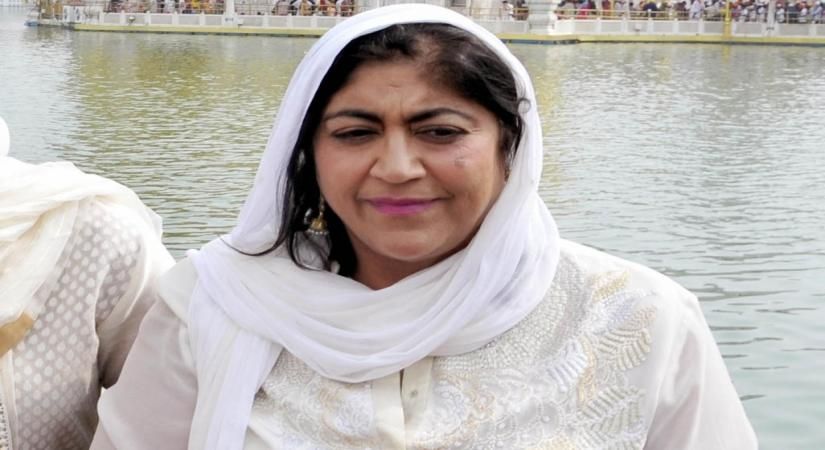|
Nagaur, June 28 (IANS) In the desert state of Rajasthan, water is akin to God and the villagers do everything here in their power to conserve every drop of this precious resource.
In the Nagaur district, a simple way in which water is conserved in the villages is through their ponds.
The remarkable fact about these ponds is that many of them date back to severalcenturies ago and have been preserved through the efforts of the villagers alone.
No river flows through Nagaur district and the groundwater is non-potable. Under such circumstances, villagers found effective ways to conserve and use rainwater. To save rainwater, tanks were built in homes for individual use and ponds were built for community use.
Even today, these ponds form the primary source of water for a large number of villagers of Nagaur.
The legacy of Lakholav
In the town of Mundwa is the Lakholav pond, spread over about 80 bighas (bigha is a traditional unit of measurement that varies across different states. In Rajasthan, 1 bigha is roughly equal to 0.625 acres) and built over nine hundred years ago. Even today, 90 per cent of the population of the village uses the water from this pond for consumption.
A full pond can fulfil the needs of one lakh people for one whole year. Apart from the Lakholav, Mundwa has other ponds like Gyan, Pokhandi and Motelav. But Lakholav is the lifeline of Mundwa and its surrounding villages. It is believed to be sacred and there are more than two dozen temples around it.
The groundwater of Mundwa is very deep and saline. Its high fluoride content makes it unsafe for consumption. Hence, Lakholav serves as the main water source for the people here. Ghanshyam Sadawat, former Chairman of Mundwa Municipality, said, "Even though the water of the Indira Canal reached Mundwa about four years ago, most villagers still drink water from the Lakholav."
According to local villager Ramswaroop Dahiya, the Lakholav pond is revered by the villagers.
"Most villagers start their day by worshipping the deities in the temples surrounding the pond," he said.
Whenever the pond needs cleaning, most villagers come forward to volunteer their services. Villagers have also ensured that not an inch of land in the catchment areas is encroached upon, thus allowing the free flow of rainwater in the pond.
A lot of CSR activities here are also centred around water conservation. For example, Ambuja Cement, whose operations are based in Nagaur, collaborated with the community to de-slit Lakholav.
They deployed machinery for excavation, shaping and desilting, whilst the villagers donated labour and machines to shift the huge amounts of soil. An additional water storage capacity of 3626 cubic metres was created in the pond and the high-nutrient soil that was removed was added to the topsoil in the surrounding fields,
Over the last five to six years, a lot of efforts have been made for its beautification. While the villagers have contributed their time and labour for the cause, the Mundwa municipality contributed close to two crore rupees to the project.
Today, railings can be seen on three sides of the pond, and a five feet track surrounds the pond for people to walk on. Lakholav pond is now looked at as a lovely picnic spot, with its dense trees and chirping birds. Every year on the evening of Roop Chaudas or Narak Chaturdashi, thousands of villagers light lamps at the pond to express their gratitude.
Other significant ponds
Grand ponds like the Lakholav exist in almost every village of Nagaur. Hiralal Bhati, a resident of Taausar village said, "Even though canal water reached the village through a pipeline seven to eight years ago, people in Taausar drink only the pond water. We do not like the taste of canal water and it is polluted."
Similarly, the villagers of Chawali village in the Jayal tehsil, still depend on the water in the Shiv Sagar pond. The Soyali pond of Goth village, Sunda Sagar of Gugriali, Ramsar of Ramsar, Sonali of Sonali, Kumbrao of Didiya Kallan are other examples of well-preserved ponds.
Dhannaram, Secretary of Urmul Khejadi Sansthan, an NGO based in Jhareli village, believes that the villagers have a huge role to play in the preservation of the ponds.
"Ponds in the cities of Nagaur district have become garbage dumps, but the ponds in the villages are still as clean as they were centuries ago. This is because the ponds secure the lives of the villagers and in turn, the villagers protect the ponds," he said.
Traditions of preservation
During a 10-day research tour conducted by the organisations Urmul Khejadi Sansthan and Unnati Sansthan in February 2020, the state of the ponds in the villages were examined and almost all were found to be well-preserved.
"We went to 40 villages, and everywhere the villagers told us about their traditions of water conservation and water sanitation," said Dhannaram.
According to the research report, no formal committees have been formed for the maintenance of the ponds in the Nagaur villages. Every decision regarding the ponds is taken collectively by the villagers. Every village has implemented a certain set of rules regarding the ponds. There is no tolerance for littering in the pond.
Emphasis is laid on keeping the catchment area free from encroachment. The Lakholav pond and its catchment areas, for example, have been maintained clean for centuries perhaps due to the many rules laid down by the villagers. It is strictly forbidden to enter the pond wearing footwear. Bathing, washing clothes, bathing cattle in the pond are also not permitted. There is no restriction on carrying water from the pond for home, but water from ponds cannot be taken for sale.
The report further highlights that the ponds are maintained according to the villagers' traditional knowledge. As per this knowledge, the villagers dig and clean the ponds, taking special care that the soil layer that holds the water in the pond is not damaged.
These ponds also remain full through the year. The ponds of Deh, Rol, Ramsar, Goth and Gugariyali villages have not run dry for many years and the Kumbhara pond of Didiya Kallan has not run dry for 30 years, states the report.
Rules of conduct
The rules made for the conservation of ponds may be unwritten but they are being followed religiously by the villagers. For example, there are 22 ponds in Rol village. Here, violators of the rules are immediately summoned to the village meeting area and they have to pay a penalty decided by the villagers. Bisnani pond of Didiya Kallan village is situated on 25 bighas of land.
Its catchment areas are spread over 600 bighas of land. The rules made for the pond 500 years ago are still in effect today. It is forbidden to carry water from Deediya Kalan's pond to other villages. If anyone does so, he has to pay a fine of Rs 10,000. The women of the village work at the pond on every new moon day. From the pond in Deh village, one can carry water by filling pitchers, but one cannot fill it in tankers.
Dhannaram points out that many villages have a ban on carrying water from one village to another. "This is because the people of other villages do not follow the rules. Earlier, the people of Chhawata Kalan, Tangli and Tangla villages used to fill water from the pond of Chhawata Khurd. But about 10 to 12 years ago they disobeyed the rules and they were banned from carrying water," he recalls.
Villages may also decide to stop or resume sharing water with other villages depending on availability. There are some villages where ponds are not maintained well and dry up quickly, forcing residents to look for other sources.
The rules laid down by the villagers have helped them preserve these ponds through the years. And the villagers of Nagaur are proud of it. Their active involvement in protecting their water sources sets an excellent example for other regions with water scarcity.
--IANS
Amarpal/sdr/
Copyright and Disclaimer: All news and images appearing in our news section, search engines and social media are provided by IANS. If you face any issues related to the content/images, please contact our news service provider directly. We are not liable/responsible for any content/images related to the news service provider.
|









